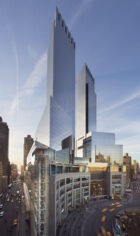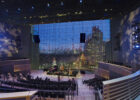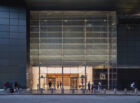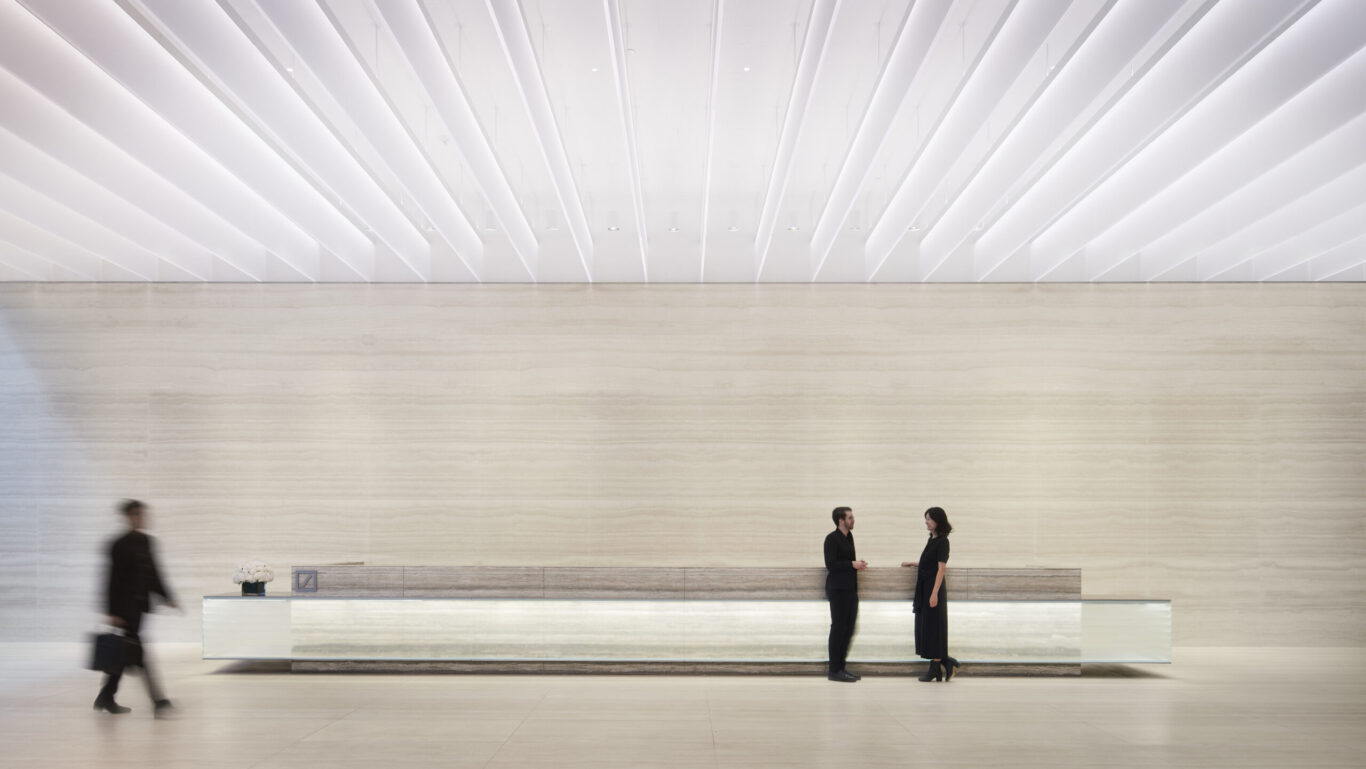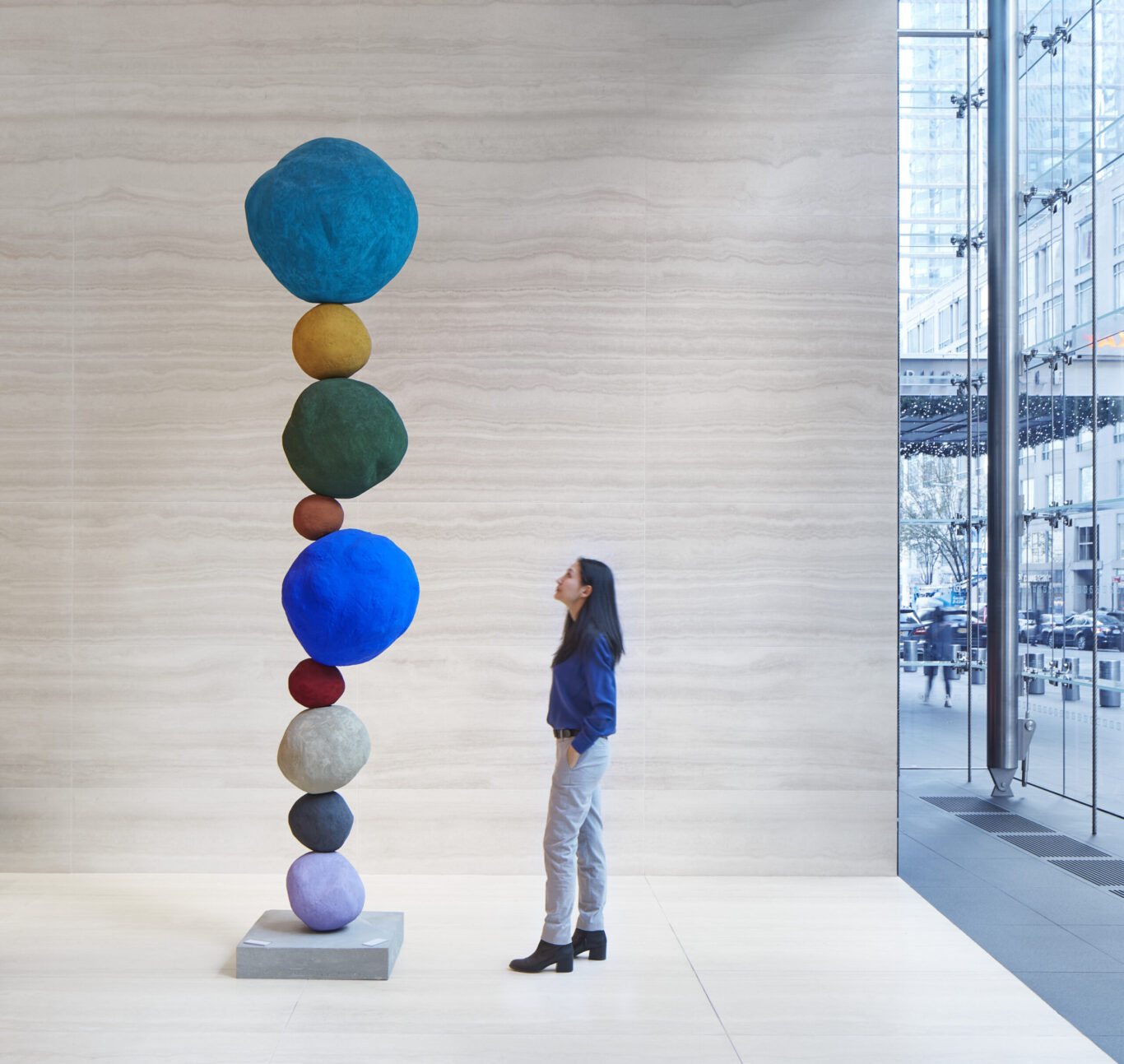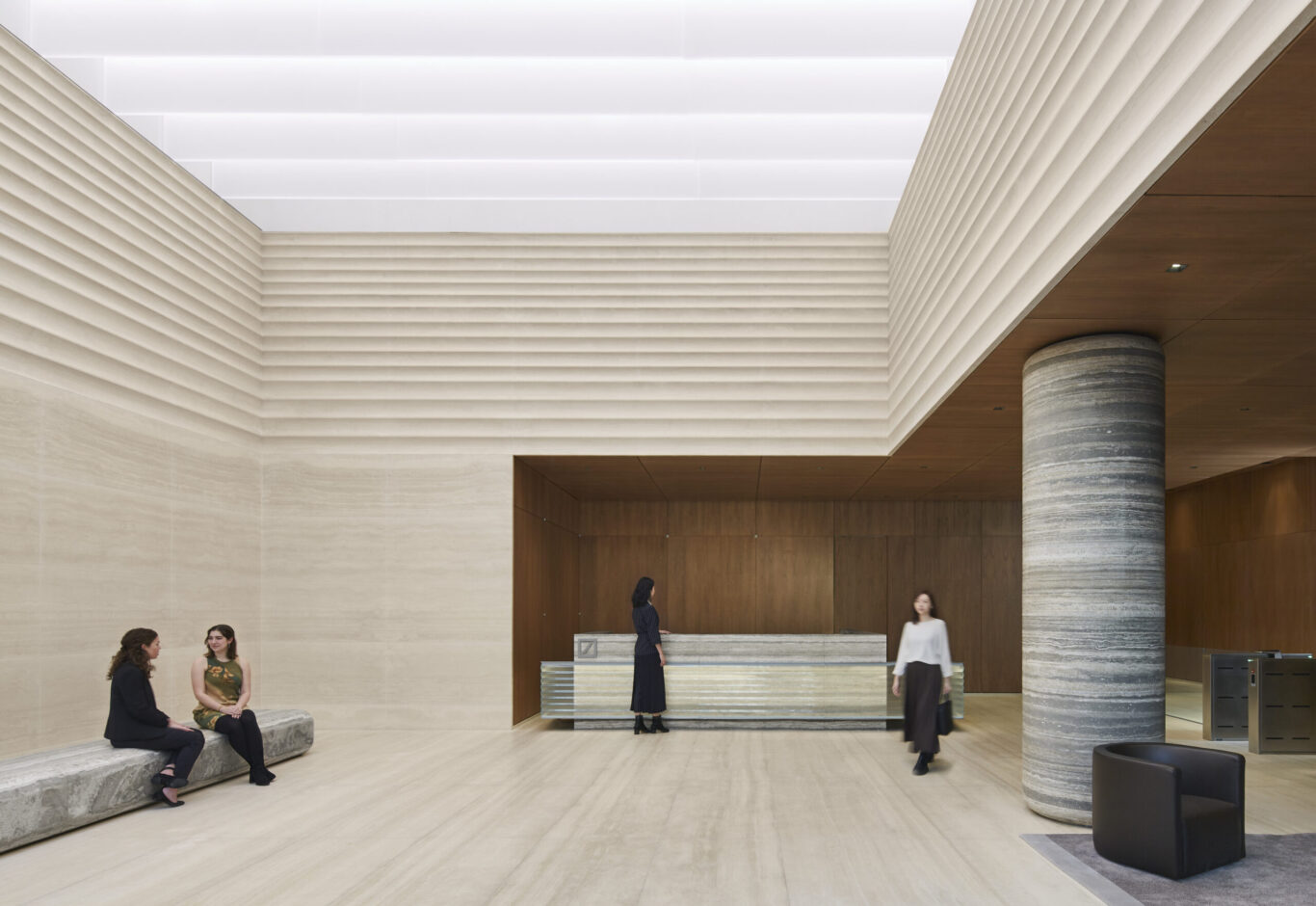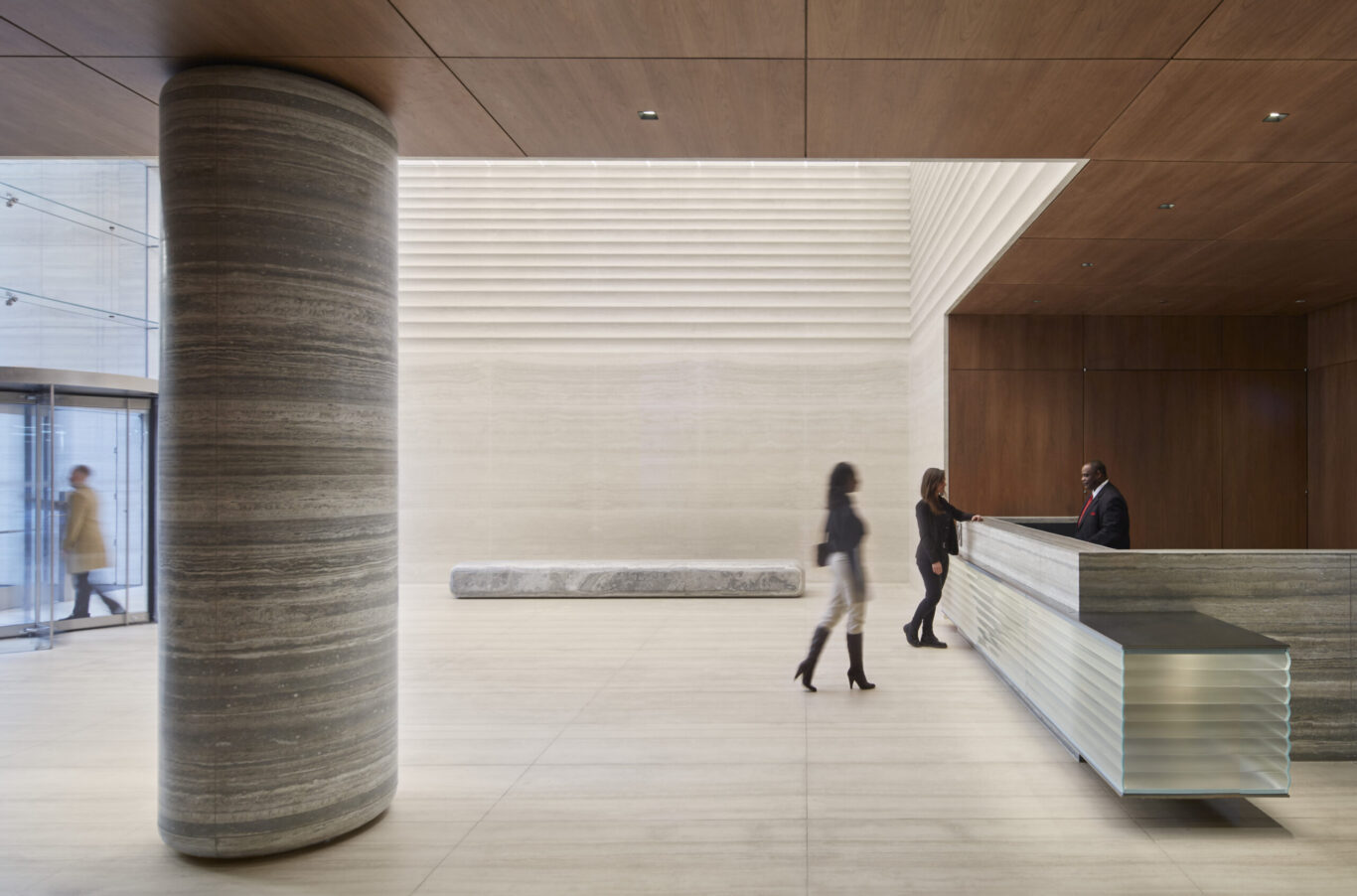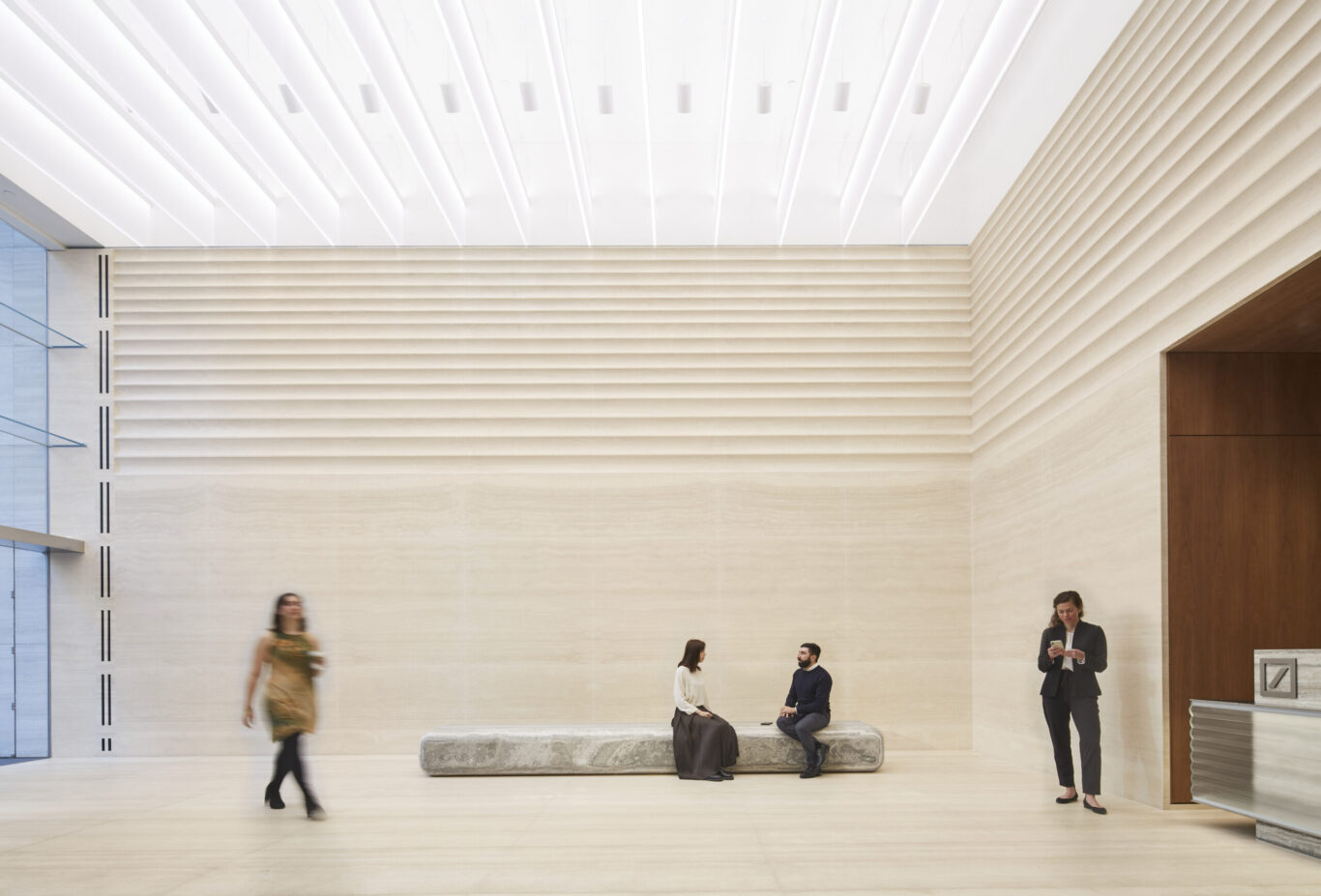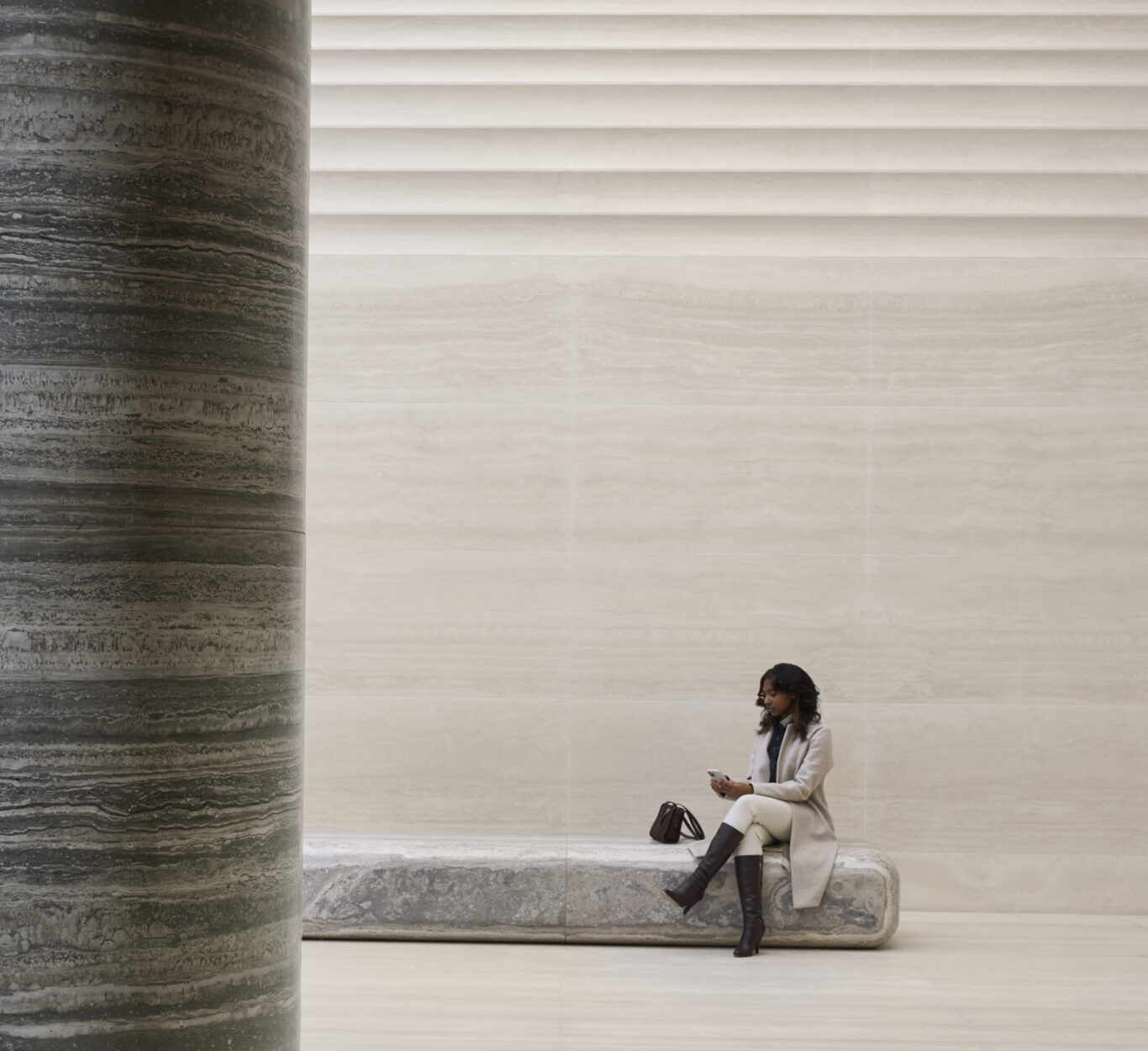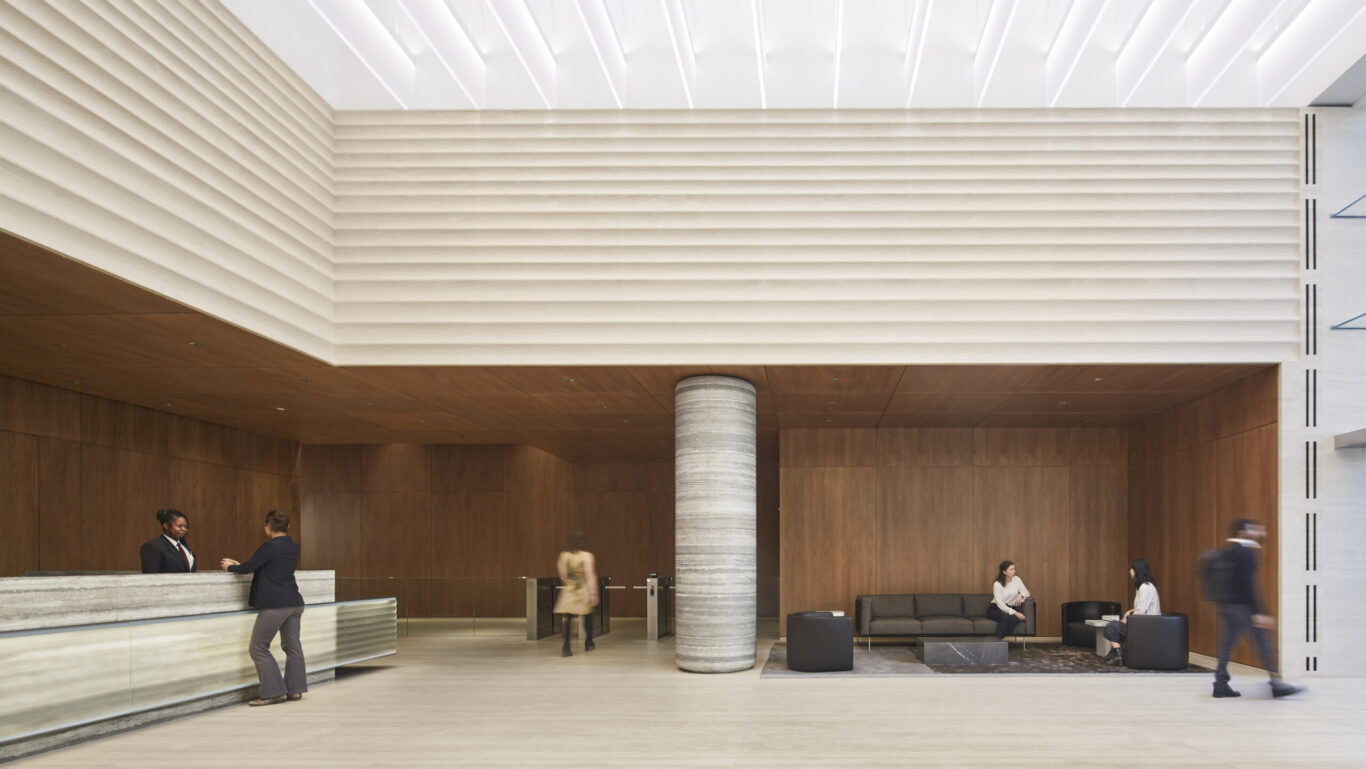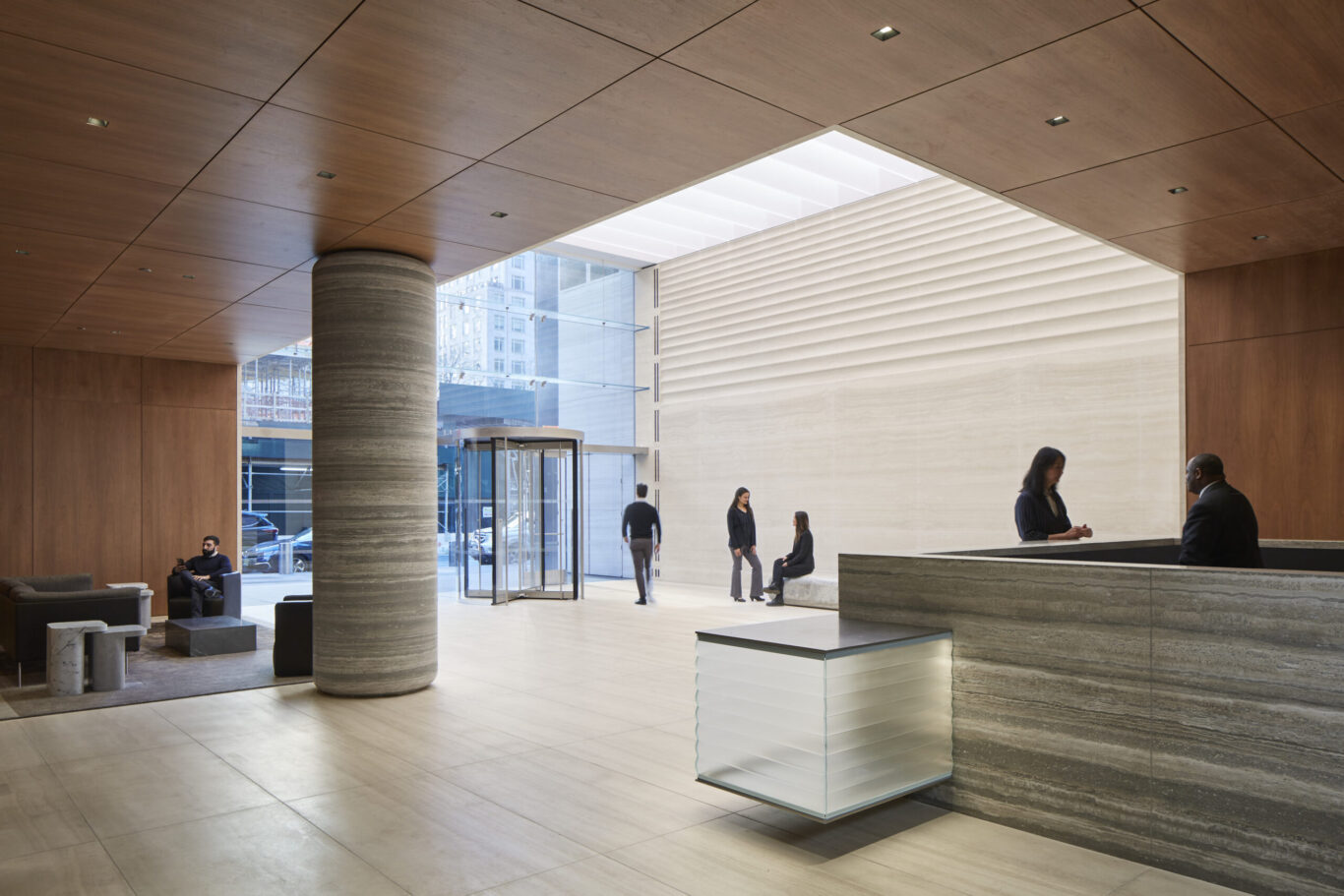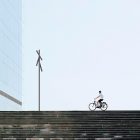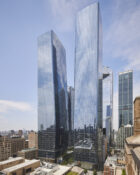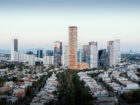Fitting a city within a building
Deutsche Bank Center, originally known as Time Warner Center, brings an array of urban amenities into a single building at a prominent corner of Central Park. It encompasses five levels of retail and restaurants, a performing arts center, condominiums, a hotel, and offices, along with direct access to subway service and underground parking. For more than a decade, the building housed CNN’s New York television studios. Its health club was among the largest ever built at the time, and its lower level became New York City’s first Whole Foods.
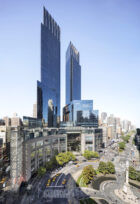
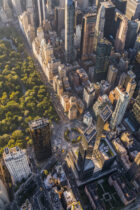
To knit this diverse array of functions together, the design is composed of several distinct forms that moderate the building’s scale while alluding to the landmark residential towers of the Upper West Side.
Built to replace the New York Coliseum—a windowless convention hall that quickly became outdated—the building’s form deftly responds to its urban context. A stone-and-glass base, following the curve of Columbus Circle, is topped with two trapezoidal towers. The base houses the retail and production studio components, while the towers contain offices, the hotel, and residences. Culminating in luminous glass and steel crowns, the twin-towered design echoes the historic apartment buildings which line Central Park West.



